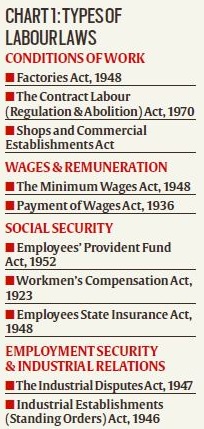900 319 0030
enquiry@shankarias.in
Click here for Part-I
What is the issue?
What are Indian labour laws?

What are the concerns?
What are the likely implications of states' decisions?
Will the changes boost economic growth?
What should have been done?
Source: Indian Express